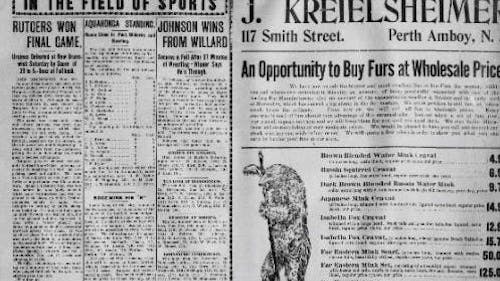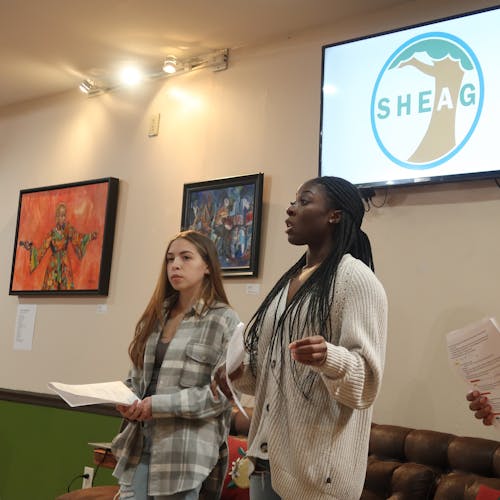Rutgers Libraries revitalizes print, digitalizes New Jersey newspapers

On June 20, 1906, Rutgers inaugurated William Henry Steele Demarest as its 11th president, according to an article in the Perth Amboy Evening News on that date — the ceremony drew representatives from leading colleges across the nation.
On Nov. 5, 1919, an article in the Bridgeport Times and Evening Farmer celebrated the 50th anniversary of the first ever intercollegiate college football game between Rutgers University and Princeton.
Tales of New Jersey’s past are being digitized and brought back to life through the New Jersey Digital Newspaper Project (NJDNP) — a collaboration between Rutgers Libraries, the New Jersey State Archives and the New Jersey State Library.
The project began in 2016, but this summer it received a second round of funding of $219,609 from the National Endowment for the Humanities. This grant will allow them to digitize three newspapers: the Bridgeton Pioneer, Jersey City News and the Perth Amboy Evening News.
Caryn Radick, a digital archivist with Rutgers Special Collections and University Archives, said that approximately 100,000 pages of local New Jersey news will be put online over the next two years.
“The first cycle started Sept. 1, 2016 and ended Aug. 31, 2018,” she said. “So, the second one picks up Sept. 1, 2018 through Aug. 31, 2020. So, the idea is that by Aug. 31, 2020 we would have submitted the 100,000 pages for that cycle — making about 200,000 total for New Jersey.”
The finished product ends up in the Library of Congress, on its Chronicling America site, where visitors can search through the online papers, she said.
Radick said NJDNP looked for “papers of record” that produced original information about the town or region they represented.
It is important to have because it serves an immediate way to access research materials and the history of New Jersey, she stated.
“Well, the immediate benefit is that somebody can look at them on their phone or from home or wherever they have access to the internet,” Radick said. “They might be doing research on a family member or historical event, and these newspapers will turn up as a source for them.”
The papers archived so far have largely been from the the late 19th to early 20th century, she said.
“When we first applied for the grant the ending year was 1922, which is because that’s the year, that’s where the copyright boundary is. So, things before 1923 are in the public domain, and after 1923 you have to get permission from the publisher. They expanded it recently to go up to 1963,” Radick said.
Research aside, the newspapers also hold years of possibly forgotten stories that are now being brought back to life.
One about a couple who eloped in South River stood out to Radick.
"It sounded like they ran away together, they came back, and then they went their separate ways to their families and then maybe a year or two later they eloped again,” she said, explaining the story. “He was married, and he ended up going to prison for a few years …"
She said it was an interesting chronicle to follow, as not all of the newspapers had been digitized yet so she had to wait for the end of the story.
“Everyday you would get another development and it was really interesting,” Radick said.
Getting from print to the internet can be a time and work intensive process, she said.
The master negative version of the microfilm is taken from the page and stored in a vault before going on handcranks to be examined frame-by-frame by technicians, she said. That then gets sent to a vendor to be duplicated, and that duplicate is what gets run through a scanner and digitized.
It is eventually approved, put on a hard drive and sent to the Library of Congress.
“If we can find some newspapers that represent a little more diversity in the state, from different ethnic groups, that would be something to consider as well,” Radick said about looking for future papers to digitize. “But, largely it needs to be on microfilm that meets certain quality standards, between those time periods and just be a good representation of a certain town or region of New Jersey.”



